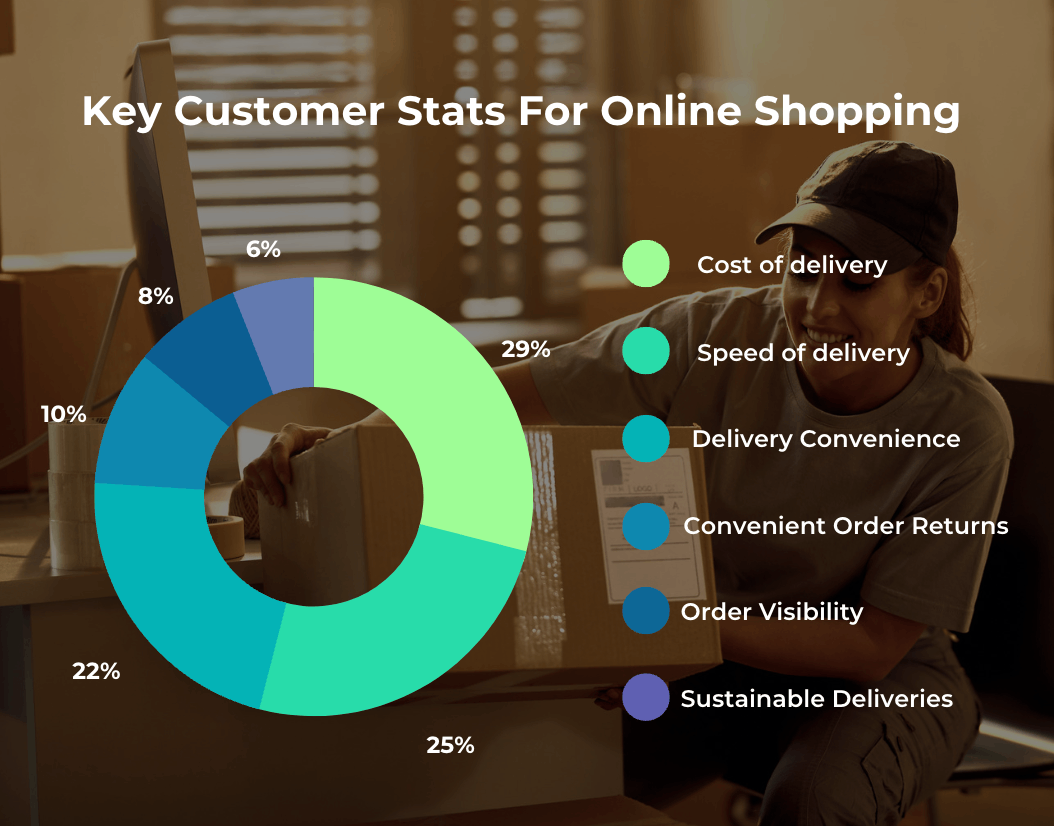
Comparison Between Scheduled Pickup and On-demand Deliveries
Change is the only constant they say. With changes in technology, you might soon find yourself in a hole if you cannot adapt to these changes. The logistics and supply chain industry has seen tremendous growth and changes over the last two decades. The rise of eCommerce has made people shift from scheduled pickup to on-demand deliveries. With consumers wanting more flexibility in order deliveries, delivery providers should look to optimize their last-mile deliveries.
Key stats that customers consider when shopping online:
These are the key trends that businesses should look into when choosing the best last-mile software to handle deliveries.
- 29% of customers look into the cost of deliveries on each order.
- 25% of customers prefer the speed of delivery for their order.
- 22% of customers check for convenient delivery (time and location).
- 10% of customers look for convenient order returns.
- 8% of customers want complete visibility of their orders.
- 6% of customers want their deliveries to be handled in a sustainable manner.

What is a scheduled pickup/ delivery?
A scheduled pickup/ delivery is a method in which the items/ products to be picked up and delivered is set as per the convenience of the shipper or carrier. The date and time of delivery are also set by the shipper/ carrier and delivered within that time slot. Some of the daily used applications for scheduled pickup include Amazon, USPS, FedEx, etc. A scheduled pickup/ delivery will be properly planned and route optimized for sustainable deliveries. Once the order is placed the customer gets real-time tracking of all the delivery stages.
How to schedule a bulk pickup?
A bulk pickup is a process that helps delivery associates save crucial time to get orders delivered. A bulk pickup option can be enabled from a driver app that will help the delivery associate pick up multiple orders that need to be delivered at the same delivery location. The bulk pickup and delivery will be assigned to the delivery associate based on the distance from their current location. Scheduled pickups require precise planning to get the deliveries completed within the set time slot. This is where a last-mile delivery solution will come in handy to automate delivery routes, offer real-time tracking, and ensure sustainable deliveries for maximum customer satisfaction.

What are on-demand deliveries?
On-demand delivery as the name suggests is the ability of the delivery provider to meet the demands of customers that need items delivered at the earliest. Usually, these deliveries will happen within fifteen minutes to two hours. With the rise in eCommerce, delivery companies are looking for a reliable on-demand delivery solution to meet order demands. Some of the industries that require on-demand deliveries are Uber, Lyft, USPS, Amazon (groceries), etc.
How do on-demand deliveries work?
As customers need more convenience in deliveries, on-demand delivery has caused massive disruption in the supply chain. Businesses stock items in dark stores or silos that will be specified for a specific area to handle all their delivery requirements. These dark stores are refilled based on the delivery analytics covered for their orders.
On-demand deliveries help delivery companies provide their customers with the following-
- Same-day deliveries.
- Ensures faster and more sustainable deliveries.
- Operations managers get detailed visibility and analytics for each trip.

What is the difference between a scheduled pickup and on-demand deliveries?
| Scheduled Pick-up | On-demand Deliveries |
| Scheduled pick-up is the delivery that is planned to be delivered on a scheduled date and time. | On-demand deliveries are carried out to meet customer demands at the earliest. |
| Deliveries can be planned as per customers’ convenience. | These deliveries are helpful to meet current customer demands. |
| It allows for efficient fleet utilization. | Fleet utilization can take a hit, especially during peak hours without a proper delivery solution. |
| Not helpful in planning for immediate requirements. | Allows for convenience-based planning for immediate orders. |
| Pick-ups are usually scheduled from warehouses | Pick-ups are usually scheduled from local stores/ dark stores. |
Note: Subscription-based deliveries are another way items are delivered to customers. Such deliveries usually have a repeat delivery scheduled (usually after 30 days). Subscription-based deliveries are ideal for those who periodically shop for the same items (eg. groceries). This is a convenient way for customers to address their requirements and helps the business secure a returning customer. However, it offers customers reduced convenience for deliveries.
The Final Verdict
While one can’t predict the future, it’s important to match current customers’ demands. Businesses should look for a last-mile delivery solution that can offer the benefits of handling scheduled pick-up and on-demand deliveries. On-demand deliveries should be considered if the customer requires faster delivery and afford the additional costs associated with it. Scheduled pick-up and deliveries are best suited for those customers that need affordable and same-day or next-day delivery. LogiNext with its advanced last-mile delivery solution can help businesses meet both demands. Connect with an expert to get the best last-mile software to handle all your delivery needs by clicking the red button.
106







@LogiNext